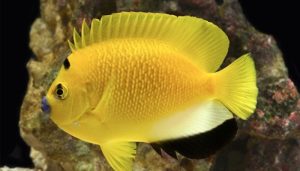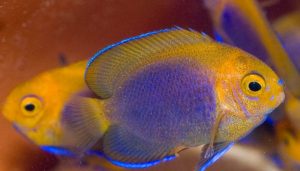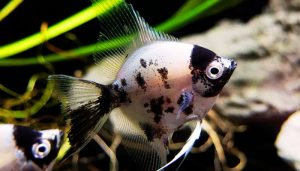Giant land snails are fascinating creatures that have captivated pet enthusiasts and nature lovers alike. Whether you’re a curious snail owner or just intrigued by these slow-moving marvels, one question often comes to mind: What Do Giant Land Snails Eat?
Understanding their diet is crucial to keeping them healthy and thriving. These gentle mollusks have specific nutritional needs, and providing the right food can make all the difference in their well-being.
So, what’s on their menu? Let’s dive in and uncover the best foods to nourish your giant land snail.
Giant land snails enjoy a variety of fresh vegetables, fruits, and leafy greens. Their diet can include dandelions, kale, broccoli, sweet or bell peppers, green beans, strawberries, bananas, squashes, and parsley.

These foods provide essential nutrients that keep your snail active and healthy. Always remember to wash the produce thoroughly and avoid foods treated with pesticides to ensure your snail’s safety.
By offering a balanced diet, you’ll not only meet their nutritional needs but also help them thrive in their environment. We’re about to delve into the delicious details of the giant land snail’s diet and create the ultimate care sheet for these unique pets.
Table of Contents
ToggleWhat Do Giant Land Snails Eat?
Giant land snails, such as the Achatina fulica, have a varied diet that consists primarily of Leafy green plants, including lettuce, spinach, watercress, cabbage, land cress, dandelions, grass, fruit, and vegetables, as well as other giant African land snails available foods that provide essential nutrients.
These snails will eat cucumber, carrot, sweet potato, kale, melon, courgette, and butternut squash. To ensure they receive enough calcium in their diet, offering them cuttlefish bone or cuttlebone is essential.
Additionally, feeding them a snail mix or a mix of fish flakes, peas, and biscuits soaked in water can provide the necessary nutritional value.
Snails should be fed around twice a week, with the food placed in a shallow bowl of water to prevent dehydration. Providing a varied food list is vital to prevent them from getting bored with their diet.
Feeding the first few leaves of any new food item is essential, as snails heavily exposed to pesticides can be harmful to them. Calcium can be provided by offering them a source of calcium, such as cuttlebone, ensuring their shells are strong and healthy.
African Snail Care Sheet for Snail Owners
African land snails, particularly the Giant African Land Snail (GALS), have become increasingly popular as unique and low-maintenance pets.
However, caring for these fascinating creatures requires specific knowledge to ensure their well-being and prevent potential ecological issues. Here’s a comprehensive care sheet to guide you:
Housing:
- Enclosure Size: A spacious terrarium is crucial, as African snails can grow large. A 10-gallon tank suits a single adult snail, but bigger is always better.
- Substrate: Use a mix of coconut coir, peat moss, and orchid bark to maintain humidity and allow for burrowing. Avoid using soil from your garden, as it may contain parasites or harmful chemicals.
- Decoration: Provide hiding spots with pieces of cork bark, coconut shells, or small clay pots. Include climbing structures like branches or rocks. Live or artificial plants can be added for enrichment, but ensure they are non-toxic.
- Temperature and Humidity: Maintain a temperature between 70-80°F (21-27°C) and humidity levels around 70-80%. Use a hygrometer to monitor humidity and mist the enclosure regularly.
Diet:
- Variety is Key: Offer diverse fruits, vegetables, and leafy greens. Popular choices include cucumber, zucchini, carrots, apple, banana, kale, and romaine lettuce.
- Calcium Source: Cuttlebone is essential for shell health and growth. Provide a piece of cuttlebone at all times.
- Protein Supplement: Occasionally offer a small amount of cooked egg or fish flakes for additional protein.
- Fresh Food and Water: Replace food daily and provide fresh, chlorine-free water in a shallow dish.
Cleaning:
- Regular Maintenance: Remove uneaten food and feces daily. Spot-clean the enclosure as needed.
- Deep Clean: Perform a thorough cleaning of the terrarium and its contents at least once a month.
Health:
- Shell Health: Monitor the shell for any cracks or abnormalities. Provide adequate calcium to prevent shell problems.
- Parasites and Diseases: Watch for signs of illness, such as lethargy, loss of appetite, or changes in mucus production. Consult a veterinarian experienced with invertebrates if you suspect any health issues.
Important Considerations:
- Legality: Check local regulations, as owning African snails is illegal in some areas due to their potential as an invasive species.
- Escape Prevention: Ensure the enclosure is escape-proof, as snails are excellent escape artists.
- Responsible Ownership: Never release unwanted snails into the wild. This can have devastating consequences for local ecosystems.
- Handling: Wash your hands before and after handling your snail to prevent the spread of bacteria.
By following these guidelines, you can provide a safe and enriching environment for your African snail and enjoy the company of these intriguing creatures.
Commonly Asked Questions about What Do Giant African Land Snails Eat (FAQs)
How often should I feed my giant African land snail?
The frequency of feeding your giant African snail varies. Most keepers feed every other day to once a week. Permanently remove uneaten food after a day to prevent spoilage.
What do baby giant African land snails eat?
Baby giant African land snails eat the same things as adults! Offer them a variety of chopped leafy greens, fruits, and vegetables for a balanced diet. They might like tomatoes, but they go bad quickly.
What do giant African land snails eat in the wild?
Huge African snails are omnivores and eat decaying plant matter, fruits, and vegetables in the wild. While interesting pets, they are only recommended in some areas due to regulations.
What do giant African land snails like to eat?
Giant land African snails enjoy a vegetarian diet, munching on leafy greens, fruits, and vegetables like cucumbers and carrots.
What can giant African land snails eat?
Giant African land snails can eat various foods, including fruits, vegetables, leaves, and processed foods like bread or pasta.
Are land snails legal in the US?
Land snails can be legal in the US but with restrictions. Huge African snails are illegal due to their risk as agricultural pests. They can produce very fast, so always check your state regulations before getting a pet snail.
Why are giant land snails illegal?
Giant land snails are illegal in some countries due to their potential to become invasive species, causing significant ecological damage and posing risks to agriculture and human health.
What should I feed my land snails?
You should feed your land snails a diet consisting of fruits, vegetables, leafy greens, and calcium-rich foods like cuttlebone or crushed eggshells for their shell development.
Can giant African land snails eat strawberries?
Yes, giant African land snails can enjoy strawberries as an occasional treat. Limit fruits to 10% of their diet for balanced nutrition.
Can I have a giant snail as a pet?
Giant snails can be exciting pets, but their legality varies. Check your area’s restrictions. They require specific care and can carry diseases. Consider smaller snail species.
Why are snails and slugs considered pests?
Snails and slugs munch on leaves, flowers, and fruits, damaging gardens and crops. Their slimy bodies and potential to carry diseases make them unwanted guests.
Are heat mats good for plants?
Yes, heat mats can be good for plants, especially seedlings. They gently warm the soil, promoting faster germination and stronger root growth.
How quickly do giant African snails reproduce?
Giant African snails reproduce very quickly. Despite having both male and female organs (hermaphroditic), they typically breed every 2-3 months, laying 100-500 eggs at a time. These eggs hatch in just 1-2 weeks.
Conclusion
Caring for a giant land snail can be a rewarding experience. From their unique personalities to their fascinating behaviors, these gentle giants offer a window into a world often overlooked. Creating a suitable habitat and providing a proper diet is crucial for their well-being. By understanding their needs and respecting their slow-paced lifestyle, you can build a connection with these amazing creatures and appreciate the wonders of the natural world, one slimy step at a time.
Speaking of diet, have you ever wondered, “What do giant land snails eat?” These herbivores enjoy a variety of fresh vegetables and fruits, providing them with the nutrients they need to thrive. So next time you see a giant land snail, you’ll know what fuels their slow and steady adventures!
You might also like these participants last posts
- How Long Do Ramshorn Snails Live: (Aquarium Lifespan Facts)
- TOP 5 Best Snails for Betta Tank: (That Can Live Safely)
- Orange Giant Sulawesi Rabbit Snails Care Guide (Must Read)
- Giant Ramshorn Snail 101: Marisa Cornuarietis Ultimate Guide
- How Long Do Snail Eggs Take to Hatch: A Comprehensive Guide
- What to Feed Rabbit Snails: (7 POWER Foods They LOVE!)




